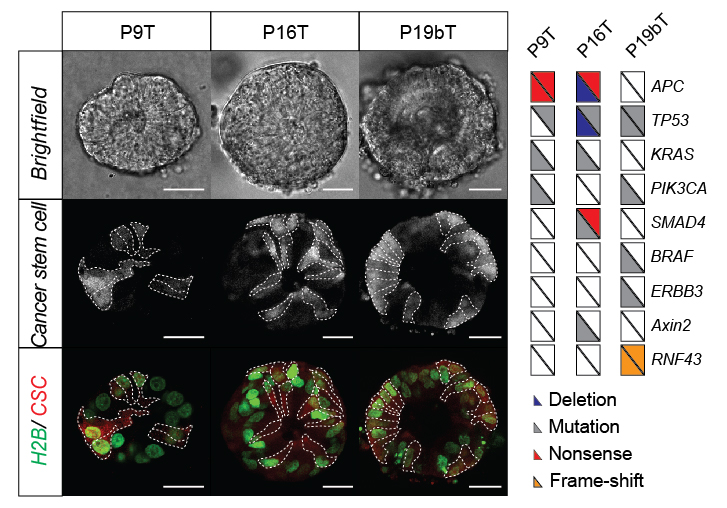PHENOTYPIC HETEROGENEITY /
CANCER STEM CELLS
Phenotypic heterogeneity in tumors includes non-genetic processes, such as different cell fates and phenotypes due to variable expression patterns. These are either established by tumor intrinsic cues, e.g. cellular differentiation hierarchy, or upon interaction with the tumor microenvironment.
The exact interplay between genetic and non-genetic factors remains elusive with respect to tumor growth, progression and therapy resistance.
The role and consequence of having multiple cell types within a cancer is mostly centered towards the function of cancer stem cells (CSCs) since they are the driving forces of tumor growth. However, the exact signaling cues that support CSC function remain to be understood. For instance, what are the roles of differentiated tumor cells in relation to CSC support? We study cell-cell communication between different cell types in human colorectal cancers (CRCs). Our lab develops markers to label CSCs in patient-derived CRC organoids (PDOs) for high-resolution live imaging of their cellular behavior and cell fate dynamics. Currently, we almost exclusively use CRISPR knock-ins for the genetic engineering of PDOs.
Most recently, we used PDOs, genetic mouse models and PDO xenografts, to document the emergence of de novo CSCs during metastasis formation of colon cancer in the liver. Crucially, these cells only appear once a multicellular state is formed, known as micrometastases. Failure to establish CSCs through YAP-controlled epithelial self-organization prohibits the outgrowth of micrometastases.
- Schepers, Snippert et al., Science 2011
- Snippert, Schepers et al., EMBO rep 2014
- Oost et al., Cell rep 2018
- Bollen et al., PLOS Biol 2022
- Heinz et al., Cancer Research 2022

